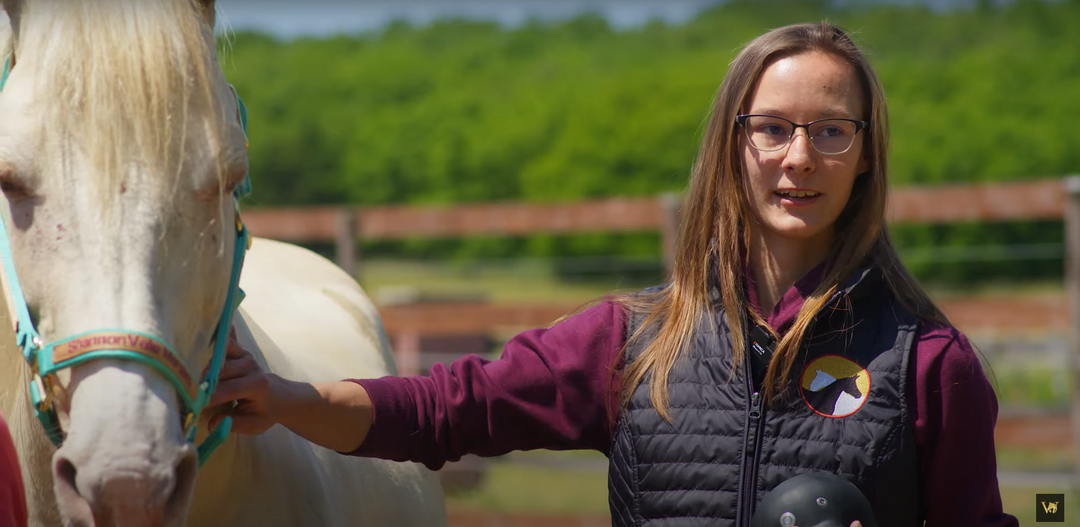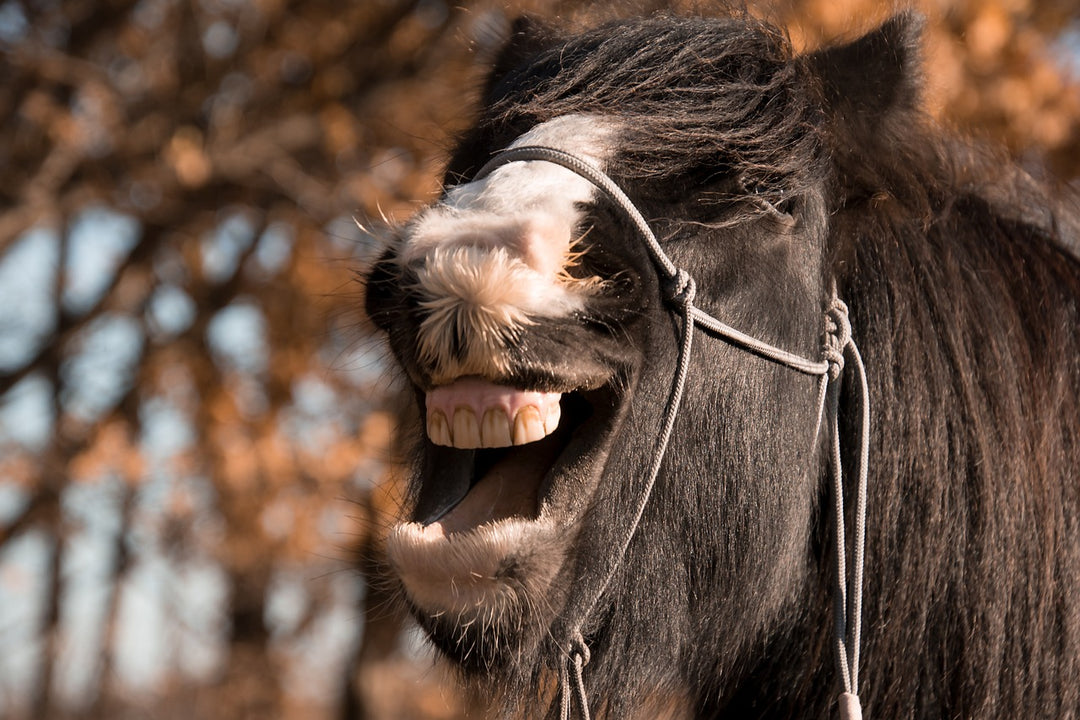How to Use the WACKARO®
WACKARO® is safe to use for owners and is a valuable tool for therapists as well. This page will give you some tips on its use and application, which muscles to target and how to familiarise the horse to it.
Orsolya Losonci, founder of HORSI, equine behaviourist, bodyworker and nutritionist member of the International Equine Bodyworker Association and the International Association of Animal Behaviour Consultants says “I find the WACKARO® perfect for soft tissue including myofascial release. I recommend it to my regular clients to help keep their horses comfortable in-between bodywork sessions.”

The Need-to-Know
The WACKARO® could help to release tight muscles and muscle knots and thereby help avoid potential compensational problems to develop. It is great to helps to ease the muscle tension of horses on box rest, it can help relax them and could also help the recovery in specific cases. It improves blood flow to the muscles and also stimulates nerve endings. Above all, it is a great tool to use to bond with your horse.
The product comes with 3 heads
- a hair remover
- a mud scraper
- and a massage head
Always check with your vet if they recommend using the product on your horse. They know the history of your horse and possible contraindications. Make sure to stop the session if your horse objects to it and ask your vet, your therapist and/or equine behaviourist about the next steps. Reach out to HORSI, or on-board equine therapist and the WACKARO® team if you have any questions of if you need help using the product.
The Introduction Process
The WACKARO® has a really silent noise and horses generally accept it very well. If your horse is happy being clipped, then the WACKARO® is a less invasive sensation.
It is best to break down the process into smaller steps. Here are some useful tips from our equine behaviourist on how you can introduce it to particularly sensitive horses:
Step 1. Show it to your horse. Start grooming them with the WACKARO® being turned off.
Step 2. Turn on the WACKARO® and give your horse some treats so that he associates it with positive experiences. You can also turn it on in the background while your horse is munching hay.
Step 3. Once your horse is happy and relaxed you can now groom or massage them with the product being turned on.
You can also switch step 2 and 3 depending on your horse's preferences.
Watch your horse’s facial expressions and look for signs of relaxation. You would not want to see tension whilst working on your horse as it could indicate that you are being too firm or that your horse is not yet comfortable with the situation. Same thing if your horse moves a step away.
If you have any questions or need some guidance, please feel free to reach out.
Tips for Massage – Areas to Target with the WACKARO® Massage Head
The Back muscles
When working the back muscles, aim to target the latissimus dorsi. Feel free to apply more pressure here. Most horses would benefit from massaging this area as this muscle plays a key role in retracting the forelimbs as well as in lateral bending. Some horses enjoy the pocket of withers being massaged more firmly. You may wish to switch to the rubber grooming head for this purpose.
When working over the top of the back, you would generally work on the longissimus dorsi which is the largest muscle in the equine back. Make sure to use the product sensibly, especially in the lumbar area as your horse may feel sensitive if you apply too much pressure here.
The areas to watch out for are the scapular cartilage, the spine, the ribs, the shelf of the ribs and the coxal tuberosity (point of hip). Please refer to Figure 1. below for these and further anatomical points mentioned on this page.
For horses that are happy with their tummy being scratched, they usually enjoy some massage on their rectus abdominis muscle.
The Hindquarters
To keep your horse healthy and happy in work, his hindquarters need regular massage. You can use the WACKARO® firmly here, especially if your horse is in medium or hard work.
Here you would primarily target the gluteal muscles, although your horse will most likely enjoy some massage on the semitendinosus and semimembranosus muscles as well. These muscles are used for retracting the hindlimb and extending the hip. You can use the WACKARO® relatively firmly here but make sure to go easy on the biceps femoris and the tensor fasciae latae.
Avoid the bony areas including the tuber sacrale, the point of hip, the hip joint area, the ischiatic tuberosity and the stifle.
Lower Leg - Forelimbs and Hindlimbs
You may wish to switch to the rubber head for these areas. This will help avoid touching on the bony areas: the olecranon (elbow), the radius, the carpus, the stifle and the hock. Only use the WACKARO® with medium pressure here. Do not work below the carpus because horses do not have muscles in their lower leg.
The Shoulder and the Pectoral Muscles
Most horses enjoy the WACKARO® being used more firmly in this area. This is where some of the key core muscles are located.
Here, you would primarily target the triceps and the subclavius muscles. Lower down between the forelimbs, you would massage the pectoralis descendens and the pectoralis transversus muscle. Watch out for the sternum here and in case of senior horses or those with loose skin, make sure that you do not let the skin get pinched. Just hold it with one hand and use the product with your other hand.
Behind the elbow is another pectoral muscle, the pectoralis ascendens. Horses with compensatory issues, gastric ulcers or those ridden with tight girths generally have some tightness or sensitivity in these areas. If your horse is happy for you to work this muscle, spend some time massaging this area. Feel free to use the product firmly here.
Avoid the sternum, the spine of the scapula, the scapular cartilage the deltoid tuberosity and the olecranon.
The Neck Muscles
First, feel for the bones of cervical vertebrae. In the case of old horses or horses with poor muscle or body condition it is best to go easy on this area or to avoid it altogether. Apply more pressure on the splenius muscle and on the area highlighted in the video (triangle). Horses generally enjoy it if you spend more time here.
Horses with a high-set neck and energetic horses like arabians who tend to have a high head carriage usually overwork their brachiocephalicus muscle. By softening it with the WACKARO®, you can help encourage relaxation.
Horses that tend to work behind the bit or are ridden in a constant outline enjoy a soft massage on the C2-C3 area. Some horses prefer the rubber hair removal attachment here, this varies from horse-to-horse. Whichever head you choose, make sure you avoid the bony sections in this part of the body, including the wing of atlas. Also be careful around the ears and the mane, especially if you have a sensitive horse.
Muscles of the Head
When using the WACKARO® to massage your horse’s head, focus on two main muscles, the masseter and the temporalis.
Only use the soft rubber attachment for this purpose.
Take care not to touch on the facial ridge and the mandibular ramus (jaw area). Also take care to avoid the bony processes and the temporomandibular joint in this area.
If your horse is sensitive around his ears, he will need more time to get used to the machine. Move slowly and please refer to “The Introduction Process” part above for some tips. Patience is key. Never force it on the horse. It will only create a bracing response which is the opposite of what the WACKARO® is designed for.
Signs of Release in Horses
Stimulating blood flow and helping muscle relaxation can be very beneficial and most horses will show signs of release which include:
- deep blinks
- sighs
- yawning
- relaxing the lower lip
- licking and chewing
- lowering or shaking the head and neck
- stretching
Please contact us if you have any questions regarding massaging your horse or the use of the WACKARO®.










